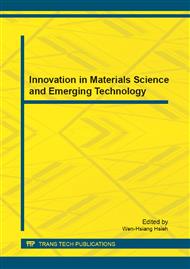[1]
Goolge: We Kew The Web Was Big. http: /googleblog. blogspot. com/2008/07/we-knew-web-was-big. html.
Google Scholar
[2]
Wikipedia, http: /en. wikipedia. org/wiki/World_Wide_Web.
Google Scholar
[3]
Vossen, G. and Hagemann, S., Unleashing Web 2. 0: From Concepts to Creativity. Morgan Kaufmann (2007).
Google Scholar
[4]
HousingMaps: http: /www. housingmaps. com.
Google Scholar
[5]
Lorenzo, G., Hacid, H., Paik, Y., and Benatallah, B.: Data integration in mashups. ACM SIGMOD 38, 59-66 (2009).
DOI: 10.1145/1558334.1558343
Google Scholar
[6]
Tseng, C.: Developer-Friendly Annotation-Based HTML-to-XML Transformation Technology. In Proceedings of the 2011 ACM Symposium on Document Engineering (2011).
DOI: 10.1145/2034691.2034707
Google Scholar
[7]
Jhingran, A.: Enterprise Information Mashups: Integrating Information, Simply. In Proceedings of the 33rd international conference on Very large data bases, 3-4 (2006).
Google Scholar
[8]
Liu, X., Hui, Y., Sun, W., and Liang, H.: Towards Service Composition Based on Mashup. In Proceedings of the IEEE international conference on Services computing, 332-339 (2007).
DOI: 10.1109/services.2007.67
Google Scholar
[9]
Altinel, M., Brown, P., Cline, S., Kartha, R., Louie, E., Markl, V., Mau, L., Nq, Y., Simmen, D., and Singh, A.: Damia: a data mashup fabric for intranet applications. In Proceedings of the 33rd international conference on Very large data bases, 1370-1373 (2007).
DOI: 10.1145/1376616.1376734
Google Scholar
[10]
Wong, J. and Hong, J.: Making mashups with marmite: towards end-user programming for the web. In Proceedings of the SIGCHI conference on Human factors in computing systems, 1435-1444 (2007).
DOI: 10.1145/1240624.1240842
Google Scholar
[11]
Lin, J., Wong, J., Nichols, J., Cypher, A., and Lau, T.: End-user programming of mashups with vegemite. In Proceedings of the 13th international conference on Intelligent user interfaces, 97-106 (2009).
DOI: 10.1145/1502650.1502667
Google Scholar
[12]
Yahoo! Inc. Pipes: http: /pipes. yahoo. com/pipe.
Google Scholar
[13]
Arocena, G.O. and Mendelzon, A.O.: WebOQL: Restructuring documents, databases, and webs. In Proceedings of the 14th IEEE international conference on Data engineering, 24-33 (1998).
DOI: 10.1109/icde.1998.655754
Google Scholar
[14]
Jirkovský, V. and Jel'ınek, I.: Proposing of modular system for web information extraction. In Proceedings of the 2009 international conference on Computer systems and technologies, 1-4 (2009).
DOI: 10.1145/1731740.1731847
Google Scholar
[15]
Meng, X., Hu, D., and Li, C.: Schema-guided wrapper maintenance for web-data extraction. In Proceedings of the 5th ACM international workshop on Web information and data management, 1-8 (2003).
DOI: 10.1145/956699.956701
Google Scholar
[16]
Chang, C.H. and Girgis, M.: A survey of web information extraction systems. IEEE Transactions on Knowledge and Data Engineering 18, 1411-1428 (2006).
DOI: 10.1109/tkde.2006.152
Google Scholar
[17]
Laender, A.H.F., Ribeiro, B., and Silva, A.S.: DEByE--Data extraction by example. Data and Knowledge 40, 121-154 (2002).
DOI: 10.1016/s0169-023x(01)00047-7
Google Scholar
[18]
Chang, C.H. and Kuo, S.C.: OLERA: A semisupervised approach for web data extraction with visual support. IEEE Intelligent Systems 19, 56-64 (2004).
DOI: 10.1109/mis.2004.71
Google Scholar
[19]
Wang, J. and Lochovsky, F.H.: Data extraction and label assignment for web databases. In Proceedings of the 12th international workshop on World wide web, 187-196 (2003).
DOI: 10.1145/775152.775179
Google Scholar
[20]
Taivalsaari, A., Mikkonen, T., Ingalls, and D., Palacz, K.: Web Browser as an Application Platform: The Lively Kernel Experience. Sun Labs. (2008).
DOI: 10.1109/seaa.2008.17
Google Scholar
[21]
BuiltWith Trends: http: /trends. builtwith. com/websitelist/Javascript (2011).
Google Scholar


